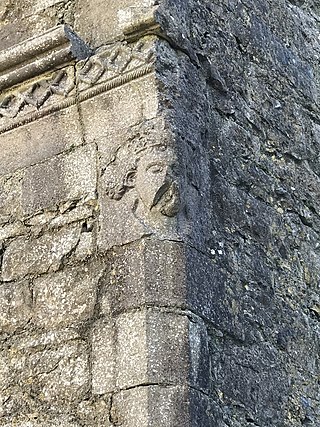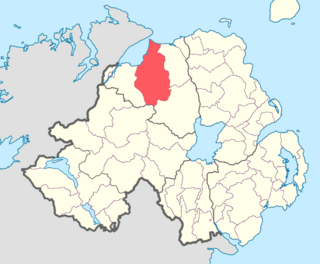Related Research Articles

Corned beef, bully beef, or salt beef in some Commonwealth countries, is salt-cured brisket of beef. The term comes from the treatment of the meat with large-grained rock salt, also called "corns" of salt. Sometimes, sugar and spices are added to corned beef recipes. Corned beef is featured as an ingredient in many cuisines.

The Fenian Cycle, Fianna Cycle or Finn Cycle is a body of early Irish literature focusing on the exploits of the mythical hero Finn or Fionn mac Cumhaill and his warrior band the Fianna. Sometimes called the Ossianic Cycle after its narrator Oisín, it is one of the four groupings of Irish mythology along with the Mythological Cycle, the Ulster Cycle, and the Kings' Cycles. Timewise, the Fenian cycle is the third, between the Ulster and Kings' cycles. The cycle also contains stories about other famous Fianna members, including Diarmuid, Caílte, Oisín's son Oscar, and Fionn's rival Goll mac Morna.

Ruaidrí mac Tairrdelbach Ua Conchobair was King of Connacht from 1156 to 1186, and High King of Ireland from 1166 to 1198. He was the last High King of Ireland before the Anglo-Norman invasion.

The Ulster Cycle, formerly known as the Red Branch Cycle, is a body of medieval Irish heroic legends and sagas of the Ulaid. It is set far in the past, in what is now eastern Ulster and northern Leinster, particularly counties Armagh, Down and Louth. It focuses on the mythical Ulster king Conchobar mac Nessa and his court at Emain Macha, the hero Cú Chulainn, and their conflict with the Connachta and queen Medb. The longest and most important tale is the epic Táin Bó Cúailnge. The Ulster Cycle is one of the four 'cycles' of Irish mythology and legend, along with the Mythological Cycle, the Fianna Cycle and the Kings' Cycle.
Lebor na hUidre or the Book of the Dun Cow is an Irish vellum manuscript dating to the 12th century. It is the oldest extant manuscript in Irish. It is held in the Royal Irish Academy and is badly damaged: only 67 leaves remain and many of the texts are incomplete. It is named after an anachronistic legend that it was made from the hide of a dun cow by Saint Ciarán of Clonmacnoise.
In Irish mythology, Mesgegra was king of Leinster during the events of the Ulster Cycle, and was also the brother of Mac Da Thó aka Mes Róidia in The Tale of Mac Da Thó's Pig.
Cúscraid known by the epithet Mend Macha, is a son of Conchobar mac Nessa in the Ulster Cycle of Irish mythology.

Cathal Crobhdearg Ua Conchobair (1153–1224), was a king of Connacht. He was the youngest son of the High King of Ireland Tairrdelbach Ua Conchobair and brother to the last fully recognized High King Ruadri Ua Conchobair. His own sons Aedh Ua Conchobair and Feidhlimidh Ua Conchobair were kings of Connacht after him.
Fíachnae mac Báetáin, also called Fíachnae Lurgan or Fíachnae Find, was king of the Dál nAraidi and High King of the Ulaid in the early 7th century. He was a son of Báetán mac Echdach and brother of Fiachra Cáech, grandson of the Ulaid king Eochaid mac Condlai and father of Mongán mac Fiachnai.

Kuno Meyer was a German scholar, distinguished in the field of Celtic philology and literature. His pro-German stance at the start of World War I in the United States was a source of controversy. His brother was the distinguished classical scholar, Eduard Meyer.
Early Irish literature, is commonly dated from the 8th or 9th to the 15th century, a period during which modern literature in Irish began to emerge. It stands as one of the oldest vernacular literature in Western Europe, with its roots extending back to late antiquity, as evident from inscriptions utilizing both Irish and Latin found on Ogham stones dating as early as the 4th century. The early Irish literary tradition flourished through the Medieval Irish period, and its literary output showcases a blend of indigenous storytelling, myth, and historical narratives. Notably, this period saw the development of a full-scale vernacular written literature expressed in a diverse range of literary genres.
Cathal mac Finguine was an Irish King of Munster or Cashel, and effectively High King of Ireland as well. He belonged to the Eóganacht Glendamnach sept of the dominant Eóganachta kin-group whose members dominated Munster from the 7th century to the 10th. His father, uncle, grandfather and great-grandfather had also been kings of Cashel, as were his son and grandson.
The Scéla Cano meic Gartnáin is an Old Irish prose tale of the ninth century or later. It forms part of the Cycles of the Kings.
Saint Colmán mac Luacháin was an early Irish abbot, founder and patron saint of Lann.
An Leabhar Breac, now less commonly Leabhar Mór Dúna Doighre or possibly erroneously, Leabhar Breac Mic Aodhagáin, is a medieval Irish vellum manuscript containing Middle Irish and Hiberno-Latin writings. The manuscript is held in the library of the Royal Irish Academy in Dublin, where it is catalogued as RIA MS 23 P 16 or 1230.
Mór Muman or Mór Mumain is a figure from early Irish literature who is said to have been a queen of Munster and daughter of king Áed Bennán. Her name means "the Great Mother" and the province of Munster is named after her. She is believed to be a euhemerised mother goddess and sovereignty goddess of the province, particularly of the Eóganachta. Mór Muman "personifies the land of Munster" and "the sovereignty of the region". She is also known as Mugain and may be the same figure as Anu and the Morrígan.
Events from the 7th century in Ireland.

The Uí Liatháin were an early kingdom of Munster in southern Ireland. They belonged the same kindred as the Uí Fidgenti, and the two are considered together in the earliest sources, for example The Expulsion of the Déisi (incidentally). The two have been given various origins among both the early or proto-Eóganachta and among the Érainn or Dáirine by different scholars working in a number of traditions, with no agreement ever reached or appearing reachable. It is entirely possible that they were the product of a combination of lineages from both these royal kindreds, or alternatively of another origin entirely.
The Tale of Mac Da Thó's Pig is a legendary tale in the Ulster Cycle.

Keenaght is a barony in the mid-northerly third of County Londonderry, Northern Ireland. It connects to the north-Londonderry coastline, and is bordered by four other baronies: Coleraine to the east; Loughinsholin to the south-east; Tirkeeran to the west; and Strabane Upper to the south-west. It was the territory of the Cianachta Glengiven from the 5th century until its takeover in the 12th century by the Ó Cathaín's. The largest settlement in the barony is the town of Limavady.
References
- Jackson, Kenneth Hurlstone, ed. (1990), Aislinge Meic Con Glinne, Dublin: Dublin Institute for Advanced Studies, p. xxvi, ISBN 0-901282-94-4
- Meyer, Kuno, ed. (1892), The Vision of Mac Conglinne: a Middle Irish Wonder Tale, London
{{citation}}: CS1 maint: location missing publisher (link) - Mercier, Vivian (1991), The Irish Comic Tradition, London: Souvenir Press, ISBN 0-285-63018-0
- Preston-Matto, Lahney (trans.) (2010), Aislinge Meic Conglinne: The Vision of Mac Conglinne, Syracuse: Syracuse University Press, ISBN 978-0-8156-3218-4